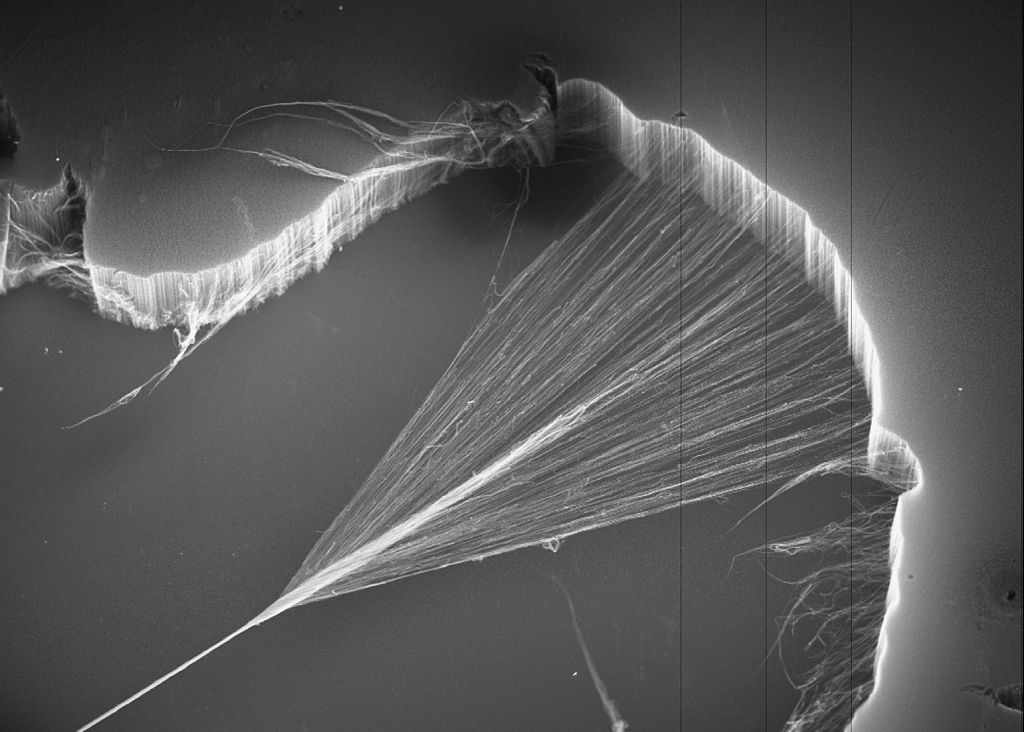CSIRO ScienceImage 1074 Carbon nanotubes being spun to form a yarn
(c) CSIRO, CC BY 3.0
Autor:
division, CSIRO
Shortlink:
Zdroj:
Formát:
3077 x 2201 Pixel (1133156 Bytes)
Popis:
The yarn contains hundreds of thousands of fibres in cross section. Each fibre is one ten-thousandth the diameter of a typical human hair. Carbon nanotube fibres are thermally and electrically conductive , can withstand extremes of temperature and are resistant to radiation-induced degradation.
Despite being strong and having a toughness comparable to that of fibers used for antiballistic vests, fabrics woven from these nanotube yarns would be soft to the touch and drapable, which is a consequence of the very small nanotube yarn diameters.
Other potential applications for this material include artificial muscles, high intensity filaments for light and X-ray sources, antiballistic clothing, electronic textiles, satellite tethers, and yarns for energy storage and generation that are weavable into textiles.
Despite being strong and having a toughness comparable to that of fibers used for antiballistic vests, fabrics woven from these nanotube yarns would be soft to the touch and drapable, which is a consequence of the very small nanotube yarn diameters.
Other potential applications for this material include artificial muscles, high intensity filaments for light and X-ray sources, antiballistic clothing, electronic textiles, satellite tethers, and yarns for energy storage and generation that are weavable into textiles.
Komentář k Licence:
Licence:
Relevantní obrázky

(c) CSIRO, CC BY 3.0

Relevantní články
Elektrovodivé příze z uhlíkových nanotrubicElektrovodivé příze z uhlíkových nanotrubic (angl.: conductive CNT yarns, něm.: leitfähige CNT Garne) jsou výrobky z uhlíkových nanovláken k použití na speciální elektronické textilie. .. pokračovat ve čtení
